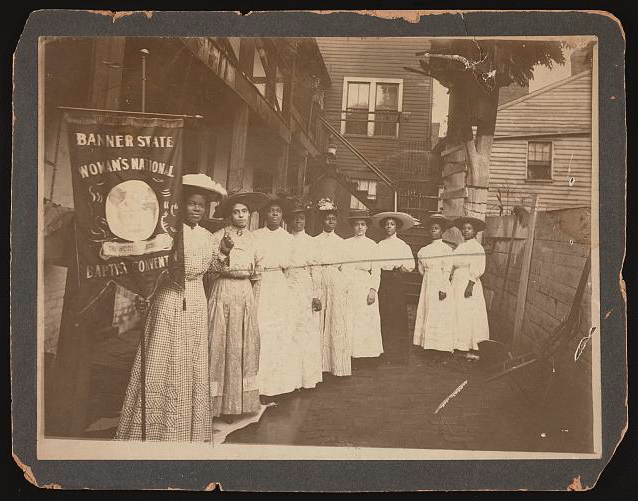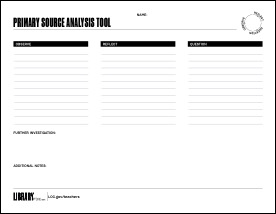
As Harvey Daniels and Sara Ahmed say, When the world hands you a curriculum, you run with it. This year was an important election year that occurred during a time of increased social justice activism. Our school was teaching entirely remotely and we wanted to respond in our digital classroom to this context. It was an opportunity to help students make sense of these times and find ways to express their own questions and ideas about why voting matters.
A team of teachers from the Intermediate Level (multiage classrooms with 9- and 10-year-old students) and our school librarian began to plan across five classrooms about how to launch our social studies investigation in this context. We knew students were aware of both the November presidential election and the social justice protests earlier in 2020. We wanted those with strong feelings and opinions to be able to share them and to engage others so they could come to their own conclusions as well. Our school is committed to using an inquiry approach to teaching and learning, and we know that inherently primary sources offer opportunities for students to observe closely, consider evidence, express their thinking, use their background knowledge, gather new knowledge, wonder, and ask questions.
Part of our inquiry approach is to find ways for lessons and experiences in the classroom to create a collective story or thread over time. Connecting the content among lessons allows students to explore related ideas and make meaning of them as their experience and thinking grows. In this instance, we also wanted students to see voting rights from multiple perspectives. Some of them knew that different groups of people won the right to vote at different times. Others assumed everyone had always had equal access to the vote. We also wanted to make connections between our social studies curriculum, primary sources, and children’s picture books.
All five classrooms began with an investigation of a primary source called “Suffragettes on Parade,” a photo in the Los Angeles Public Library’s TESSA archive. Since this year was the 100th anniversary of the 19th Amendment, we thought this investigation would be a good way to gauge both background knowledge and interest as well as launch our conversations about voting rights. We introduced a modified version of the Library of Congress’ primary source analysis tool: What do you see? What do you think? What do you wonder? Sure enough, students noticed the rows of women in white dresses, that most of the women were White, and that they were in a wide street between tall buildings. This sparked wonderful reflections and questions: Why were these women marching? Where did the march take place? Was this part of a movement? What are other perspectives on this?

From what we learned in this first experience, we introduced a comparison between “Suffragettes on Parade” and a photo of educator and activist Nannie Helen Burroughs gathering with fellow members of the Woman’s National Baptist Convention. Burroughs urged Black and White women to work together to achieve the right to vote. From here the conversations grew exponentially. Students wanted to know more about how women won the right to vote and by extension how other groups of people—African Americans, Latinx, Asian Americans, and Native Americans—campaigned for and achieved their right to vote.
As we do in our inquiry approach, classroom teachers followed the interests and listened to the voices of their students so the lessons in the five classrooms naturally began to diverge. For example, the Dual Language teachers went deeper with the history of Latinx voting in California while others focused more on vignettes from all the groups fighting for inclusion in the voting process. We all asked students to interview an adult in their life about their own voting history, as a way of both building our classroom community and of connecting our study of voting rights to this time in history. Teachers continued their bi-weekly planning together and shared all primary sources on a common Box document.
Some teachers introduced primary sources at our 30-minute Morning Meetings while others used these primary sources as provocations or warm-ups during Social Studies time. All teachers used read alouds as a way of continuing the conversations. Students had time to ask questions and process reflections before a selected picture book helped them address some of their questions and spark new ones. In tandem, this helped students build empathy and understanding. Over the course of October and November, voting rights became something that really mattered to students.
After analyzing the two primary sources about suffragists, we shared the picture book, The Voice that Won the Vote: How One Woman’s Words Made History by Elisa Boxer. This book tells the story of the ratification of the 19th Amendment. Febb Burn had written her son Harry, the youngest member of the Tennessee legislature, to “Vote for suffrage and don’t forget to be a good boy.” Harry’s “yes” vote broke the tie in the legislature, making Tennessee the 36th state to ratify the 19th Amendment.
Before reading the story, we asked students to analyze the envelope that contained the letter and a few lines from the letter itself. Using their growing background knowledge about women and voting as well as the evidence from the letter, students shared their ideas about what the letter and the envelope represented.
To help promote questions and conversations, the following week during our read-aloud session, we introduced the book Let the Children March by Monica Clark-Robinson. The book uses the fictional voice of an African-American girl to tell the story of the 1963 Children’s Crusade. In the afterward, the author quotes Janice Kelsey, who was one of the young marchers in 1963, saying, “I want young people to know that each one has the ability to make a difference in their environment…You just have to have enough courage to evaluate the situation and stand-up for what is right.” Students discussed how they could make a difference. Their ideas included creating a newspaper, vote, have a voice, believe, write letters, and have hope. This book helped us to start conversations with our students about their own ability to fight for justice and equality.
During another read aloud session, we shared the first chapter from Finish the Fight! The Brave and Revolutionary Women Who Fought for the Right to Vote by Veronica Chambers and the Staff of the New York Times. The first chapter, “The Haudenosaunee Model” discusses how Native American women of the Haudenosaunee of the Seneca Nation were powerful inspirations to some early suffragettes including Lucretia Mott.
We asked students to think about the information from the chapter to help them analyze the political cartoon, Savagery to “Civilization” drawn by Joseph Keppler and published in 1914. Using the Library of Congress’ primary source analysis tool, students carefully observed, reflected, and wondered about the meaning of this cartoon.
Continuing the story of voting in the United States, we introduced students to Lilian’s Right to Vote: A Celebration of the Voting Rights Act of 1965 by Jonah Winter. This book provides a history of civil rights and Black Americans’ fight for access to the ballot box. Again, students analyzed a number of primary sources that help tell this story, including photographs of the 1963 March on Washington and protests against suppression of Black voters in North Carolina during the 2018 elections. Some students wondered aloud why many of the signs at the 2018 protest said the same thing as those in the 1963 March on Washington. What did that say about the work that still needs to be done?
We also wanted to connect voting to a non-partisan current issue in voting rights. So, we focused for a few days on Proposition 18, the initiative that would allow 17-year-olds to vote in primaries and special elections in California. Students listened to primary sources of high school students advocating for younger voters and read some “pros and cons” in a children’s magazine article on the topic. The in-class debate was heated at times, centering on the responsibility as well as the right to vote. Some children expressed the idea that teenagers were not reliable or that they would vote the way their parents told them to. Others were ready to enfranchise younger people because they felt that 17-year-olds were responsible and capable of understanding the issues of the day.
Throughout this investigation, it was important that our students had opportunities to understand the history of voting rights from multiple perspectives. The primary source images and the read-alouds helped them understand the obstacles faced by Native Americans, African Americans, Latinx Americans, young people, and women.
Resources
Library of Congress Primary Source Analysis Tool
Primary Sources (Listed in the Sequence Studied by the Class)
“Suffragettes on Parade,” Women’s March Down Broadway in Downtown Los Angeles, Sometime before 1920
Letter to Harry Burn from Mother and Envelope to Harry Burn [from Mother]
Savagery to “Civilization,” drawn by Joseph Keppler
Read-Alouds on Voting Rights
The Voice that Won the Vote: How One Woman’s Words Made History, by Elisa Boxer (Author), Vivien Mildenberger (Illustrator)
Finish the Fight! The Brave and Revolutionary Women Who Fought for the Right to Vote, by Veronica Chambers and the Staff of the New York Times (Authors)
Let the Children March, by Monica Clark-Robinson (Author), Frank Morrison (Illustrator)
Lillian’s Right to Vote: A Celebration of the Voting Rights Act of 1965, by Jonah Winter (Author), Shane W. Evans (Illustrator)